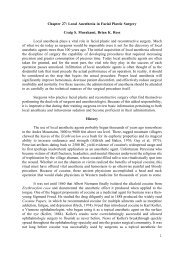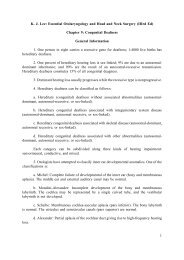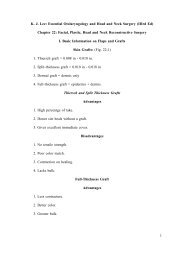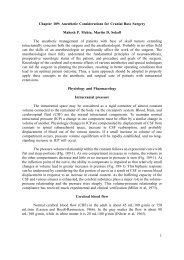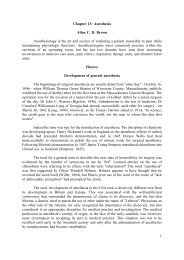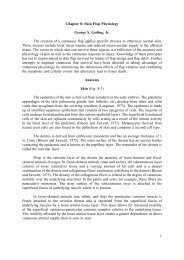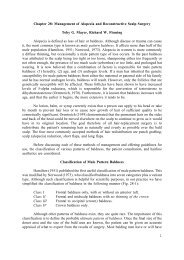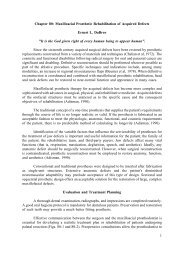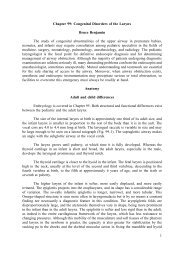You also want an ePaper? Increase the reach of your titles
YUMPU automatically turns print PDFs into web optimized ePapers that Google loves.
Table 6.4.2. Differential Diagnosis of Soft Tissue GasBacterialI Aerobic aerogenic infections- Haemolytic streptococcal fasciitis- Haemolytic streptococcal gangrene- ColiformII Anaerobic Streptococcal infectionsIII Bacteroides InfectionsIV ClostridiaV Mixed aerobic and anaerobic infectionsNonbacterial- Mechanical effect of trauma- Air hose injury injection- Hydrogen peroxide irrigation- Injection of benzene- Barotrauma, dysbarism- Postoperative- Aberrant sexual activity.Prophylaxis and TreatmentIn the injured patient prophylaxis is aimed at proper wound care, including thoroughdebridement where indicated and recognition of high-risk patients. This includes carefulinspection and cleaning of wounds prior to a decision on surgical closure and carefulobservation of patients with a risk of developing gas gangrene. The effectiveness of antitoxinhas not been proved and its possible allergic reactions and side-effects do not justify its use.Careful attention to resuscitation is essential, since some of the toxins released by thehistiotoxic organisms cause increased vascular permeability with intravascular volume lossto the interstitial compartment. Haemolysis and/or surgical losses can result in sizeablevolumes of blood loss and several units of blood must be made available. A subclavian andarterial line are required to adequately monitor and medically manage the patient. The fourcornerstones of prophylaxis and treatment remain:- suspicion- early recognition- effective early surgical debridement- administration of antibiotics.Hyperbaric oxygen has proved to be a beneficial adjunct. It is important to realize thatantibiotics alone, in the absence of an adequately debrided wound, will not prevent gasgangrene. More frequent use of delayed primary and secondary closure in suspected casescould play a major role in preventing gas gangrene.37




